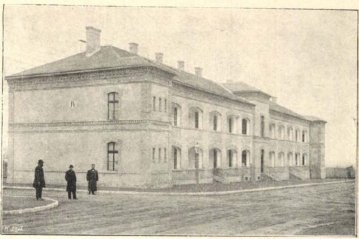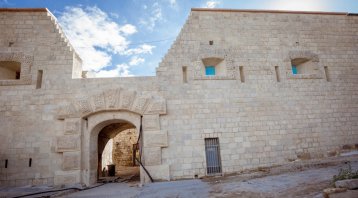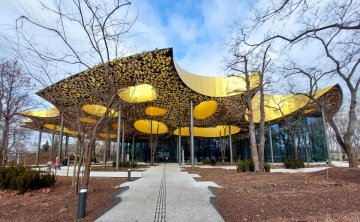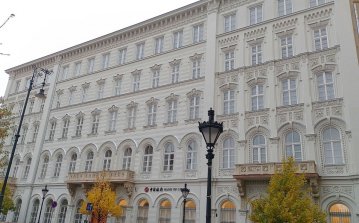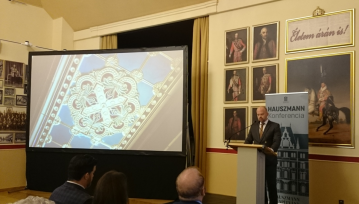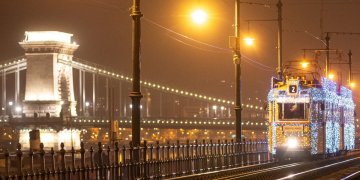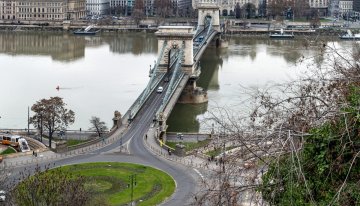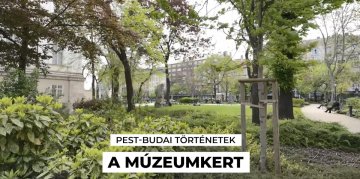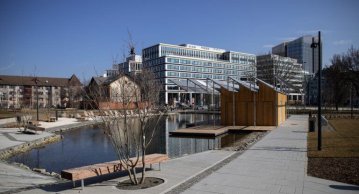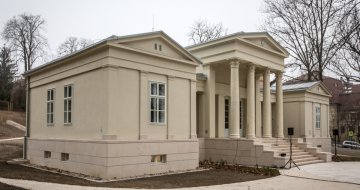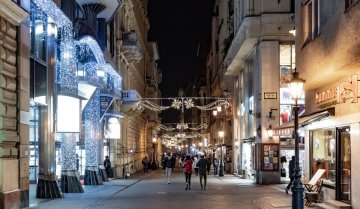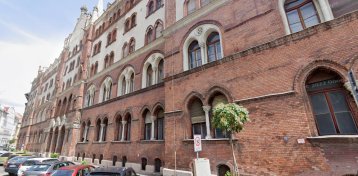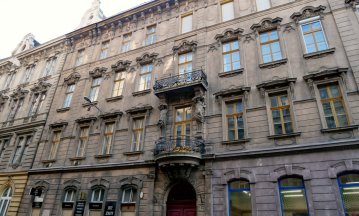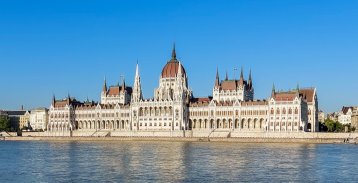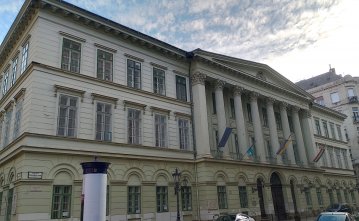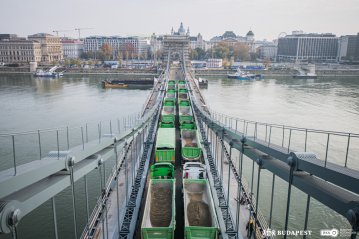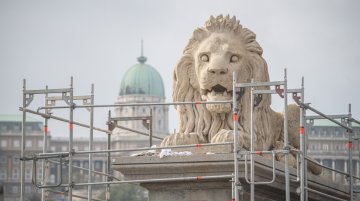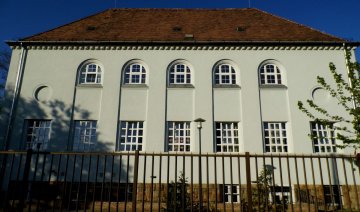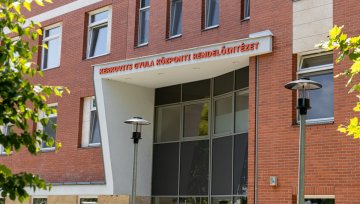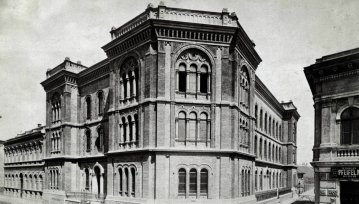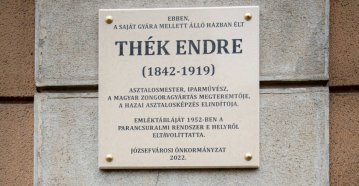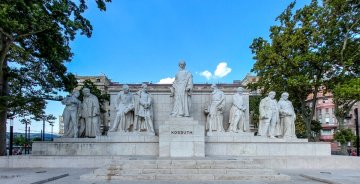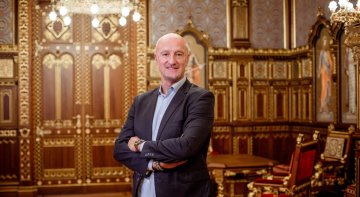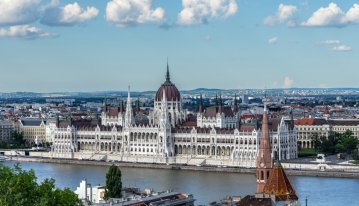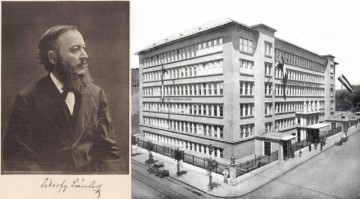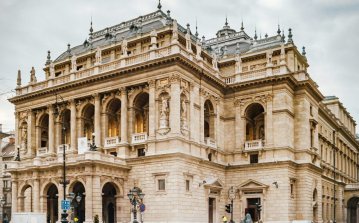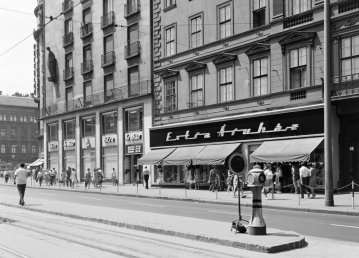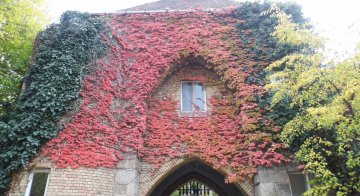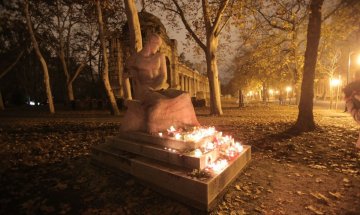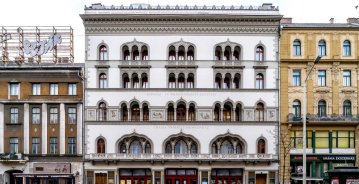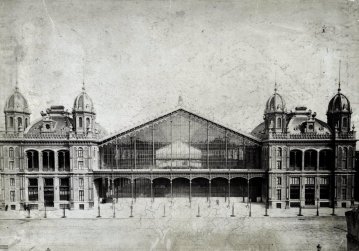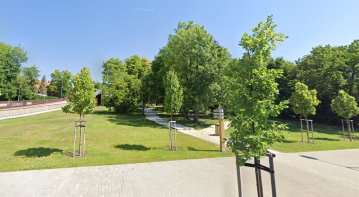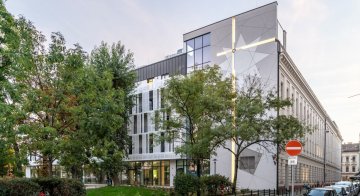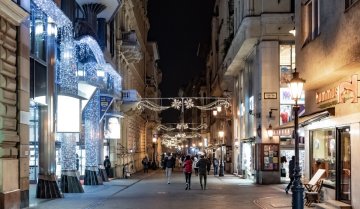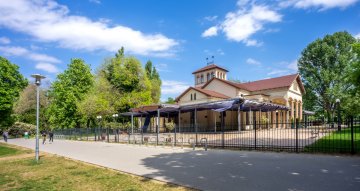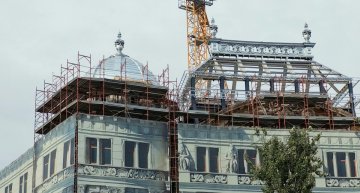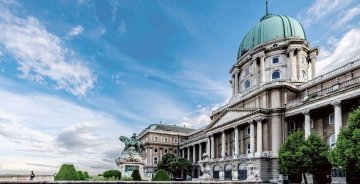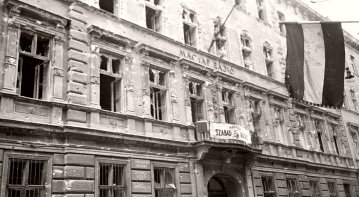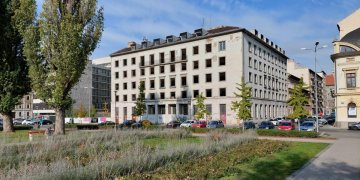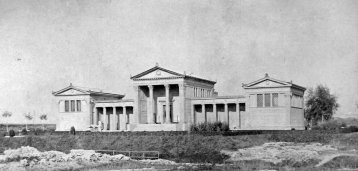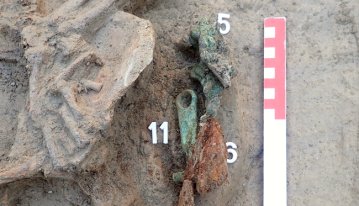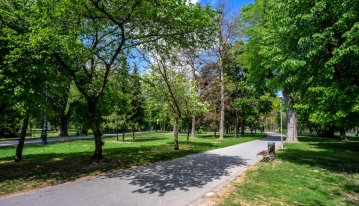 The „intertwined history” of the bridges and the city of Budapest
Which ideas and events have shaped the fate of bridges of Budapest and the cityscape? Alongside many other interesting facts, this question is also answered this newly published book by the Budapest City Archives, which introduces the history of bridges in Budapest.
The „intertwined history” of the bridges and the city of Budapest
Which ideas and events have shaped the fate of bridges of Budapest and the cityscape? Alongside many other interesting facts, this question is also answered this newly published book by the Budapest City Archives, which introduces the history of bridges in Budapest.
Search result
This was the Kis-Dzsumbuj - There was only one water tap per three apartments in the workers' flats built 125 years ago
November 29, 2022 at 9:00 AM
Thirty-six square metre flats with a room and kitchen, into which families of 4-5 people moved, there was only one water tap per three apartments in the corridor. This was provided by the Kén Street model workers' housing estate, handed over 125 years ago, in 1897. Compared to the housing conditions of the time, a new home here really represented progress, but the 96 flats handed over at that time remained a drop in the sea of misery. The microdistrict, later known as Kis-Dzsumbuj, was demolished a few years ago.
The Citadel will be renewed: the former military fortress' walls are being breached
November 28, 2022 at 2:00 PM
For decades, unworthy conditions prevailed at the top of Gellért Hill, in the vicinity of the Citadel, but last spring, after the archaeological excavations, the renovation and transformation of the former military fortress began. Now follows the breaching of the fortress walls in accordance with the design renders, as well as the design of the roundel according to the new functions and the necessary structural construction work.
The House of Music Hungary won one of the most prestigious American architectural awards
November 28, 2022 at 10:00 AM
After numerous previous professional awards, the House of Music Hungary has achieved success in America after Europe. The iconic building won one of the world's most prestigious architectural awards, the Design of the Year award.
Master of Romanticism Hugó Máltás passed away 100 years ago
November 27, 2022 at 10:00 AM
Hugó Máltás is one of our lesser-known architects, even though he had an extremely long career and life: he died at the age of ninety-four, in 1922. The fact that his name did not enter the public consciousness can be attributed to his much more busy contemporaries, primarily Miklós Ybl. However, Máltás also designed quite a lot, especially during the period of Romanticism. A summary of his works is presented below.
In the footsteps of Endre Thék, Miksa Róth, and Gyula Jungfer - Turn-of-the-century fine art and crafts will be taught again
November 26, 2022 at 1:00 PM
In Budapest, several of the previously destroyed buildings of historical importance have been recreated in recent years, but due to the lack of skilled craftsmen, the implementation was a huge challenge. The reconstructions currently underway and planned in the future will be helped by the fact that starting next year, a training course will be launched in which these crafts, which also require artistic talent, can be mastered at a high level - it was announced at the Hauszmann Foundation's conference in Buda Castle on Thursday.
The Advent tram will run again from Friday
November 24, 2022 at 7:00 PM
The attraction of the Advent and Christmas period is the Advent tram. This year, the nostalgia vehicle will appear not with the usual Christmas light decoration, but with a cozy interior decoration on tram line 2 and at several different points in the capital.
The Clark Ádám Square roundabout has regained its original shape
November 22, 2022 at 5:00 PM
As of 21 November, the original, large roundabout can be used by those travelling on Clark Ádám Square, as the first phase of the square's restoration was completed over the weekend. The renovation of the Chain Bridge continues with the renovation of the sidewalks and the reconstruction of the historic elements.
The Museum Garden, where Petőfi also visited - The scene of liberty, love and history
November 20, 2022 at 1:00 PM
The garden of the Hungarian National Museum is a symbolic place, the emblematic location of the events of 15 March 1848, which earned its name: the garden of the nation. It is one of Budapest's most popular public parks, which was already a popular resting place for city residents in the 19th century. In the Museum Garden, visitors can see the statues of famous writers and heroes of liberty, among its oldest trees is the Japanese acacia, which already saw the funeral of Lajos Kossuth in 1894, and it is where the Paul Street boys played in Ferenc Molnár's famous novel. Pestbuda's video reveals how much people had to pay to sit on the bench in the past, what the future Queen of Albania did here and how long 15 March has been celebrated in the garden of freedom and love.
The Vizafogó Park and pavilion building won the Budapest Architecture Award
November 19, 2022 at 7:30 PM
This year's winner of the Budapest Architecture Award was the Vizafogó Park and pavilion building in the 13th District. The Attila 99 Loft apartment house, the hotel and condominium apartments in the former Józsefváros Telephone Centre, the A15 villa in Zugliget, the Budafoki Zöldike Nursery, as well as the Bakáts Square and surface arrangement of the connecting streets received praise.
Following József Hild
November 18, 2022 at 6:30 PM
Classicist houses in the centre of Pest, elegant villas on Svábhegy, and the outstanding works of a great Hungarian architect: those interested can get to know the legacy of József Hild in the coming weeks, through the buildings they can find out what the era was like in which he created, how Pest and Buda developed during the booming period of Reformation in a special atmosphere.
Decorative lighting for Christmas will be up in the most important public areas of the inner city
November 18, 2022 at 3:00 PM
There will be a Christmas market on Vörösmarty Square and in front of St. Stephen's Basilica, and Christmas lighting will be up on Szabadság Square, Ferenciek Square, Váci Street, Egyetem Square, Olimpia Park and a few other streets. Although in fewer places but the inner city will be dressed in festive lights, the 5th District Local Council takes care of the Christmas atmosphere.
Conversion of the former BÁV headquarters will be postponed
November 16, 2022 at 5:00 PM
According to previous plans, the Károli Gáspár University of the Reformed Church would move into the former Central Pawnbroker Offices monument building on the corner of Kinizsi and Lónyay Streets in the 9th District. However, the public procurement procedure announced in the spring was declared ineffective due to a lack of funds.
The renewed building of the Franciscans in Pasarét was handed over
November 16, 2022 at 2:00 PM
In a quiet green area of Buda, on Szilfa Street in the 2nd District, the building of the Franciscan order can be found, which also houses a kindergarten and a day care centre for the elderly. The house was completely renovated and remodelled this year, the slate roof was replaced, and its ceremonial inauguration took place a few days ago.
The house where Kálmán Mikszáth regained his zest for life
November 16, 2022 at 9:00 AM
Lovers of literature must have thought many times about the circumstances under which a masterpiece of their favourite author was born. In what environment was that particular poem or novel written, in what state of mind was the poet or writer, did he work in a coffee house, or did he write down the famous lines and sentences at home, or sitting in the open air, in the shade of a tree. Pestubda now presents Kálmán Mikszáth's home on Lónyay Street, where the writer wrote several novels.
Citizens waited four years for it: the Community Park was handed over in Máriaremete
November 15, 2022 at 8:00 PM
The new leisure park has been completed in Máriaremete in the 2nd District, on the block of land that also includes the Dezső Gyarmati Swimming Pool and the József Pokorny Sports and Leisure Centre. The concept of the Community Park was developed back in 2018, and the residents of the neighbourhood were able to take possession of the area a few days ago, which also includes sports fields, a playground, a jogging track, and a fitness park.
The heating of the Parliament will only be modernised in the next cycle - The placement of the Holy Crown must be taken care of as well
November 15, 2022 at 2:30 PM
The House of Parliament was handed over in the fall of 1902, but the heating of the nearly 18,000-square-metre public building - which was one of the world's first district heating systems - has never been modernised. The assessment of outdated technical systems has already begun in Budapest's best-known monument, and the investment plan and cost estimate will be completed by 31 May 2023. After that, the government will decide whether planning for the internal reconstruction and modernisation of the building can begin, and then it will also be decided whether the National Assembly will have to move out during the renovation period.
Whose masterpieces were demolished: Mátyás Zitterbarth Jr. died 155 years ago
November 14, 2022 at 9:00 AM
The development of a large city is always accompanied by the demolition of buildings, as old ones are replaced by new ones that already meet modern needs. Mátyás Zitterbarth Jr., who created in the first half of the 19th century, largely fell victim to this phenomenon. However, he was a brilliant architect, which is proven by the fact that the mayors of the city of Pest entrusted him with the design of important public buildings. Pestbuda now presents his demolished and still-standing works.
This is how the Chain Bridge was load tested
November 12, 2022 at 4:30 PM
On Saturday, 12 November, the load-bearing of the Chain Bridge was tested with 24 20-tonne trucks. Based on the primary data, the crossing passed well.
All four lions have returned to the Chain Bridge
November 11, 2022 at 8:00 PM
The lions decorating the Pest bridgeheads of the Chain Bridge have also returned to their original place, so the number is now complete: all four statues stand on the three-metre-high granite plinth, guarding the bridge's entrance. The restoration took more than a year.
Nuns and communists also used the present headquarters of the Institute for the Blind
November 11, 2022 at 10:00 AM
Hermina Road, which marks the eastern border of City Park, is primarily known for its churches: the Hermine Chapel, which also gives its name, and the Church of the Immaculate Conception on the corner of Ajtósi Dürer Way. However, between the two hides a lower, yet dignified-looking building, which was originally built by the Franciscan Missionaries of Mary and handed over ninety-five years ago.
The Headquarters of the Hungarian Defence Forces has reached its highest point
November 10, 2022 at 6:30 PM
The Dísz Square building of the former Hungarian Defence Forces Headquarters (or High Command), which is under reconstruction, has reached its highest point, and the structure of the dome has already been placed on top. On this occasion, following the traditions, a topping-out ceremony was held. The tree together with the steel frame of the roof lantern adorning the dome was raised to the roof of the palace in front of the guests invited to the ceremony.
The new specialist clinic of the Bajcsy-Zsilinszky Hospital was named after a renowned cardiologist
November 9, 2022 at 7:00 PM
The new Kőbánya specialist clinic on the corner of Maglódi Road and Lavotta Street in the 10th District started operating in March, and now it has officially received a new name. The institution was named after Gyula Kerkovits, the famous Hungarian cardiologist, in whose honour a relief was inaugurated at the entrance to the clinic.
The rabbinical seminary opened its doors in Budapest 145 years ago
November 8, 2022 at 4:00 PM
In Budapest, at the corner of Bérkocsis and Bodzafa Streets in the Józsefváros district - at the intersection of today's Gutenberg Square, Scheiber Sándor and Somogyi Béla Streets - in October 1877, a solemn event took place that was rare even in the world of the time. The rabbinical seminary, in which Israelite students began their studies, opened its doors to the Hungarian Jewish people.
Endre Thék's memorial plaque was inaugurated in Józsefváros
November 8, 2022 at 11:30 AM
Endre Thék was the biggest figure in Hungarian furniture production. In honour of the master woodworker, furniture and piano manufacturer, a memorial plaque was placed on the building under 66C Üllői Road in the 8th District, where his home was. At the current inauguration, the original plaque removed in 1952 was replaced.
The speeches would have lasted four weeks if everyone had had the floor at the inauguration of the Kossuth Statue
November 6, 2022 at 1:30 PM
Sixty thousand people showed up at the inauguration of the Kossuth Statue that day, wreaths were laid by the country's top leaders, representatives of Hungarian settlements, the delegation of the United States and the city of Turin, representatives of countless foreign countries, but the Catholic Church was left out, and members of the Czechoslovak, Yugoslav, and Romanian embassy did not participate either. The monument was inaugurated 95 years ago today, on 6 November 1927, but the event was accompanied by huge controversies.
Marco Rossi in the St. Stephen's Hall
November 4, 2022 at 6:30 PM
Since its opening in August 2021, more than 100,000 people have already visited St. Stephen's Hall and the related exhibition. Marco Rossi, the captain of the Hungarian national football team, was the 100,324th visitor.
The interior renovation of the Parliament has been postponed
November 4, 2022 at 1:00 PM
Although the external renovation of the 120-year-old Parliament has been completed, its energy, mechanical, security systems and electrical network must also be modernised. The government decision published in Wednesday's issue of Magyar Közlöny talks about examining the possibilities of the expected multi-year internal renovation. The government has decided that when it is financially possible, it will support the start of the internal reconstruction of the Parliament, which is outdated in many ways.
From the Father of teachers to the hospital of the revolution - Sights of Péterfy Sándor Street
November 4, 2022 at 9:00 AM
Péterfy Sándor Street is one of the characteristic streets of Külső-Erzsébetváros, the so-called Csikágó [Chicago, written as it is pronounced in Hungarian] quarter. It owes its fame mostly to its hospital and the events that took place there in 1956, but its namesake, the Hungarian "Father of teachers", also lived here. Its characteristic streetscape consists of residential buildings with circular corridors built during the Dualism, but it is also in contact with the country's first official kindergarten teacher training institute, a former brewery warehouse and a former market square. Take a look at what this street is all about.
The Medgyaszay Hall in the Opera House building was inaugurated
November 3, 2022 at 6:30 PM
A new event space of 430 square metres was handed over in the building of the Opera House. The Medgyaszay Hall, which can accommodate 100 people, can also be home to song evenings, exhibitions, chamber concerts, youth programs, choir and children's choir rehearsals.
Bauxite concrete panic in Budapest - All affected houses were inspected 55 years ago
November 3, 2022 at 11:00 AM
In the 1960s, experts assumed with horror that a time bomb was ticking in the buildings of Budapest. A hotel ceiling crashed in, an apartment building began to crack incredibly fast right in front of an architecture professor. Bauxite concrete was responsible, so they searched and examined all the affected buildings in the capital. All this happened 55 years ago.
Art Nouveau on tombstones - An attempt to renew cemetery art
November 2, 2022 at 10:00 AM
Around the Day of the Dead, many of us visit the graves of our loved ones, and at this time we can discover that the cemetery is also a repository of real works of art. At the beginning of the 20th century, Art Nouveau, which broke with classical forms, permeated this area as well, and artists tried to offer new solutions to those who ordered tombstones. One of the most enthusiastic of them was the sculptor Richárd Füredi, who together with two of his colleagues organised an exhibition to introduce his works reflecting the new taste to the general public.
Candle lighting at the graves of our national greats in the Fiumei Road Cemetery
October 31, 2022 at 5:00 PM
In the Fiumei Road Cemetery, on 1 November, candles are provided for all those who wish to remember our national greats who rest in the cemetery. Visitors can also participate in a celebratory mass.
All rooms of Uránia can be visited again
October 30, 2022 at 7:00 PM
After an absence of nearly seven years, the two basement rooms of the Uránia National Film Theatre, which are located below the Main Hall, reopened this month. The Fábri and Csortos screening rooms had to be closed in 2015 due to water damage.
The hermit of Eger was a regular guest of Pest's coffee houses - Géza Gárdonyi died a hundred years ago
October 30, 2022 at 10:00 AM
Although his name lives on in the public consciousness as a hermit of Eger, Géza Gárdonyi was a regular figure in the cultural and literary life of Budapest at the turn of the 19th century. He was an eyewitness to the development of the city, as a journalist he reported for years from the Old House of Representatives, he visited the famous artist's salon of the Fesztys, but he was also considered a regular guest at the Centrál, the Valéria or the New York Café. Pestbuda now remembers Géza Gárdonyi, who died 100 years ago today.
The railway station that was cut in two
October 29, 2022 at 11:00 AM
By the beginning of the 1870s, the first railway station in Pest - the predecessor of Nyugati (Western), then known as Pest Station Building - was no longer able to handle the ever-increasing railway traffic smoothly. The owner railway company started the expansion, but then it turned out that the building stood in the way of the planned Outer Ring Road. Therefore, the old hall was "halved" and a new railway station was built over its northern part. The Nyugati Railway Station, as it is known today, was handed over on 28 October 1877, i.e., 145 years ago.
Several public areas will be renamed in the capital
October 28, 2022 at 2:00 PM
In the 14th District, a park is named after Eszter Pécsi, the first Hungarian female architect, and Margit Slachta, the first Hungarian female parliamentarian. A section of Eötvös Road in the 12th District will become the Kopp Mária Promenade.
Light permeates the reborn Ráday House
October 28, 2022 at 9:00 AM
Large-scale construction had been going on in Ráday Street, and especially Markusovszky Square, in recent years, the veil has recently been lifted: the new building of the Ráday Dormitory, which burned down in early 2019, has been completed. The works also included the renovation of the original centre, so an entire block of buildings was reborn in the heart of Ferencváros. Old and new blend together harmoniously, perfectly expressing the Christian values prevailing between the walls.
There will be no decorative lighting for Christmas in the capital
October 27, 2022 at 8:30 PM
According to the decision of the General Assembly of Budapest, there will be no decorative Christmas lighting in streets managed by the capital, for example, Váci Street, Városháza Park, part of Andrássy Avenue and Batthyány Square.
The capital imposed building tax on properties on Margit Island
October 26, 2022 at 7:30 PM
From 1 January, building tax must be paid on privately owned properties on Margit Island worth more than one billion HUF - this was decided by the General Assembly of Budapest on Wednesday. Budapest's leadership is encouraging the districts to follow the capital's example and impose a building tax on privately owned apartments worth more than one billion HUF.
The domes of the Adria Palace are already in place
October 25, 2022 at 2:00 PM
The restored domes of the former headquarters of Adria Royal Hungarian Sea Navigation Company on Szabadság Square can already be seen. The facade and roof ornaments of the palace, designed by Arthur Meinig are being renovated based on archival photos.
From the Curia's building to the City Park: the Hungarian National Gallery opened 65 years ago
October 25, 2022 at 10:00 AM
The Hungarian National Gallery is one of the best-known institutions in the country and the capital, which celebrates its 65th anniversary this year. The institution, which collects masterpieces of Hungarian art, opened its doors to visitors on 5 October 1957 in its first home, in the Curia's building on Kossuth Square designed by Alajos Hauszmann, to which the Museum of Ethnography later moved. It occupied its current location, buildings B, C and D of the Buda Castle, in 1975. Within the framework of the Liget Project, the plans for the new home have already been drawn up, although its implementation is still pending.
Where the armed uprising began - The siege of Hungarian Radio on 23 October
October 23, 2022 at 9:00 AM
One of the symbolic locations of the 1956 revolution in the capital was the Hungarian Radio building on Bródy Sándor Street. It was here that the flame of freedom was ignited for the first time in Pest, which spread not only to significant areas of the capital, but also to many other parts of the country, and even to some settlements beyond the border. Pestbuda now revives what happened at the Radio in the recollections of those who themselves were there during the fighting or took part in the siege.
The Party Office on the former Köztársaság Square does not allow the past to be sealed off
October 22, 2022 at 9:00 AM
Although the party office with a dark past has been continuously deteriorating for years in the former Köztársaság, today's II. János Pál pápa Square, it has not yet been possible to demolish or rebuild it. Moreover, its immediate surroundings were recently declared life-threatening and closed, so instead of being converted into a residential building as planned, the socialist realism style building continues to remind us of the bloody events of the 20th century and the 1956 revolution.
They collected memories of old times - Budapest founded a museum 135 years ago
October 20, 2022 at 3:00 PM
Budapest's position as the capital provides many advantages but sometimes it also comes with disadvantages. This was also the case in the area of museums: because the Hungarian National Museum was established here in 1807, the capital was able to establish its own institution only eighty years later - after many rural settlements. However, on 20 October 1887 - exactly 135 years ago - the decision was finally made and the Capital Museum was established.
Archaeologists have found a previously unknown site at the border of Csillaghegy
October 20, 2022 at 12:30 PM
Archaeologists came across special finds in the 3rd District, in Pünkösdfürdő Street: prehistoric-, Roman-, migration- and Avar-era monuments were found in the same place. A 6th-7th-century grave was found here, in which the buried woman had a string of glass beads around her neck, a bronze ring on her temple, and a bronze ring on her right hand. Other valuable objects of use were also found on the site from several periods.
Are we overusing Margit Island? - The capital would reduce the number of visitors
October 19, 2022 at 7:00 PM
Margit Island is currently overused and needs to be quieted down, believes the Budapest City Council, which wants to strengthen the recreational park character of the much-loved part of Budapest. They want to achieve quietness by amending legislation: the capital decree on the use of public spaces is planned to be changed in such a way that fewer people can use the services provided on the island.
Frigyes Podmaniczky, who managed the development of Budapest, died 115 years ago
October 19, 2022 at 12:30 PM
He was one of the most important figures in the history of Budapest, who devoted all his energy to the development of the capital. Baron Frigyes Podmaniczky managed the Public Works Council for more than thirty years, essentially everything that we now consider Budapest's architectural and cultural heritage was built during his time. He played a decisive role not only in the development of the city but also in the theatre world. Perhaps the most popular person in Budapest, who worked for the city until his death, died 115 years ago.
Farewell to the Ikarus 200 – They defined the streetscape of Budapest for 50 years
October 18, 2022 at 9:00 AM
Budapest will soon say goodbye to a legend that defined the image of the city for decades. BKV is preparing to withdraw the last pieces of a bus family that was perhaps the most important bus type in the world at one time. The Ikarus 200s are leaving after fifty years.
An exhibition was opened on the 150th anniversary of the construction of the Honvédmenház
October 17, 2022 at 7:30 PM
150 years ago, in the fall of 1872, on Soroksári Road in the 9th District, the nursing home built for the elderly disabled and destitute soldiers who took part in the 1848-49 revolution and war of independence was opened. Its task was to provide and care for veteran soldiers. The last veteran died in the building, designed by Ödön Lechner and Gyula Pártos, in 1928. An exhibition about the regiment of Lajos Kossuth has just opened in the Ferencváros Local History Collection.
Sculptor József Damkó was born 150 years ago - His works can be admired all over the capital
October 17, 2022 at 2:00 PM
Undeservedly little is said about sculptor József Damkó, even though the artist produced many works that stand at important points in the Hungarian capital. Such is the statue of Saint Elizabeth of the House of Árpád on Rózsák Square, the statue of St. John of Capistrano on Kapisztrán Square in Buda Castle or the statue of Pope Innocent XI on Hess András Square. His architectural sculptures and tombstones are also of considerable value. Pestbuda now presents the Budapest works of József Damkó on the 150th anniversary of his birth.
 The „intertwined history” of the bridges and the city of Budapest
Which ideas and events have shaped the fate of bridges of Budapest and the cityscape? Alongside many other interesting facts, this question is also answered this newly published book by the Budapest City Archives, which introduces the history of bridges in Budapest.
The „intertwined history” of the bridges and the city of Budapest
Which ideas and events have shaped the fate of bridges of Budapest and the cityscape? Alongside many other interesting facts, this question is also answered this newly published book by the Budapest City Archives, which introduces the history of bridges in Budapest.
 The Bridge Report, which brought a turning point in the history of Budapest
A travel report that changed the history of Pest and Buda, as well as Hungary. The little book contributed to the change of half a thousand years of legal customs and the implementation of an investment of unprecedented size and technical quality. This book was The Bridge Report [Hídjelentés in Hungarian].
The Bridge Report, which brought a turning point in the history of Budapest
A travel report that changed the history of Pest and Buda, as well as Hungary. The little book contributed to the change of half a thousand years of legal customs and the implementation of an investment of unprecedented size and technical quality. This book was The Bridge Report [Hídjelentés in Hungarian].
 Drama on the university wall - The heroic monument was planned 95 years ago
In the constant hustle and bustle of the Egyetem Square in Pest, the students may not even notice the monument that decorates the short section of wall between the church and the central building of ELTE. However, it commemorates their predecessors, the heroes who fought for their country in World War I, and those who heroically helped them. The first design of the dramatically collapsing soldier was born in 1928, ninety-five years ago.
Drama on the university wall - The heroic monument was planned 95 years ago
In the constant hustle and bustle of the Egyetem Square in Pest, the students may not even notice the monument that decorates the short section of wall between the church and the central building of ELTE. However, it commemorates their predecessors, the heroes who fought for their country in World War I, and those who heroically helped them. The first design of the dramatically collapsing soldier was born in 1928, ninety-five years ago.

